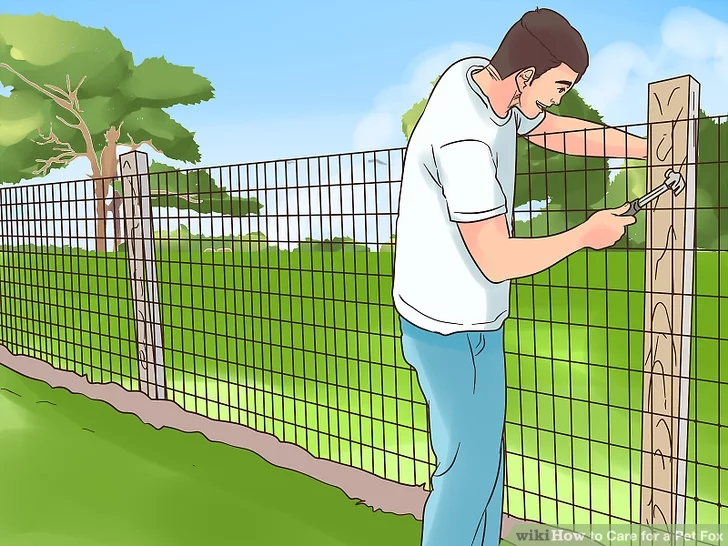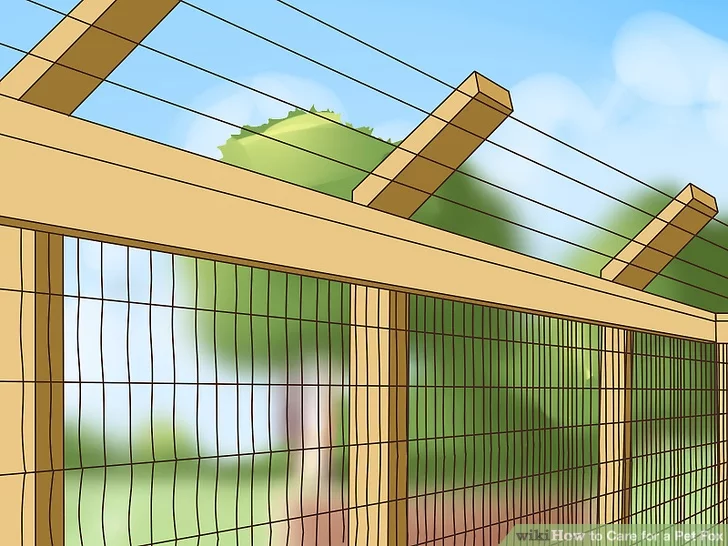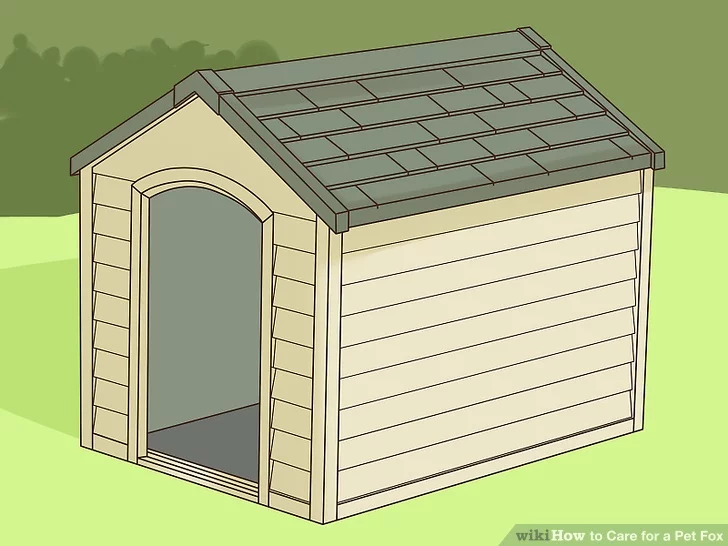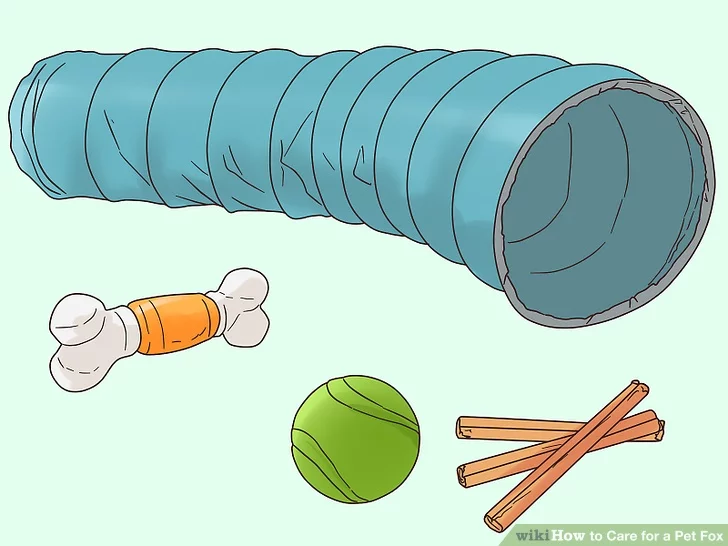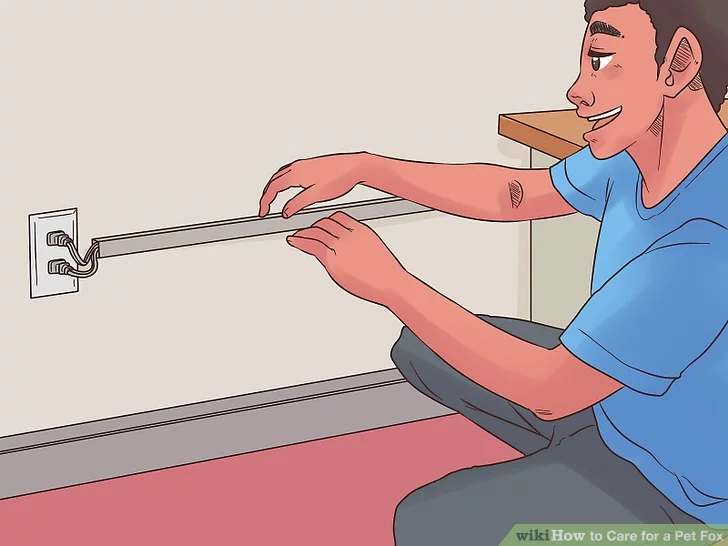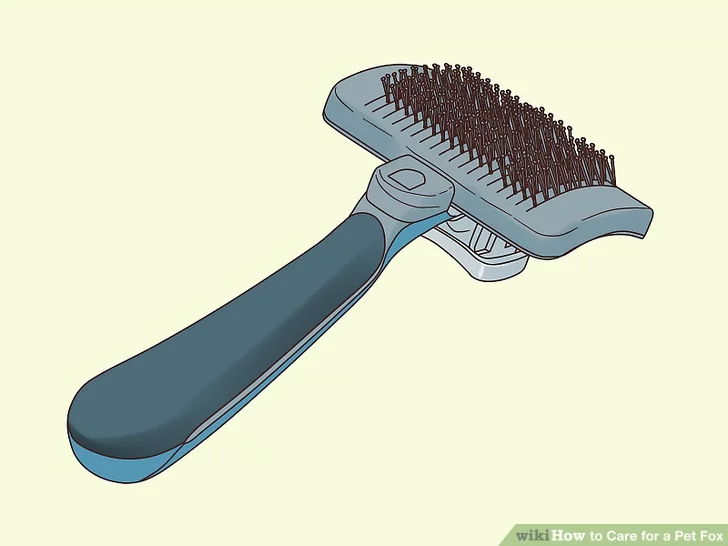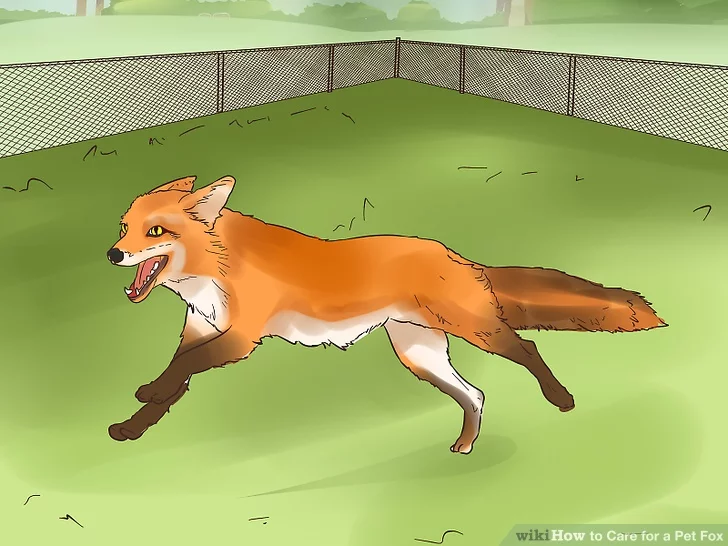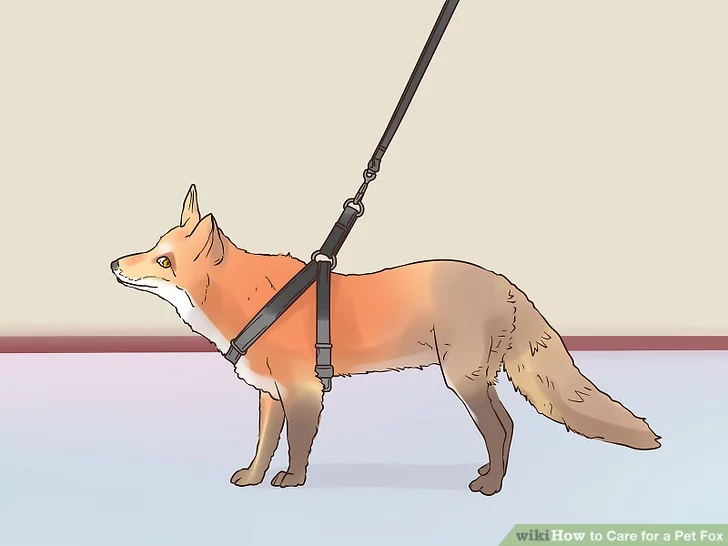
How to Care for a Pet Fox
Keeping foxes is not like keeping cats or dogs, it is a specialist hobby requiring specialist skills and equipment for those with specific interests in exotic animal education, management and behaviour. While their behaviour is often compared to dogs and cats, they are in fact, uniquely vulpine.
Caring for a fox will cost around £17,000 over it's lifetime, with an initial expense of around £3,000 - £4,000 in the first year (purchase cost, enclosure, safety equipment, diet, enrichment, vaccinations and neutering). It is not possible to obtain exotic pet insurance for silver foxes; and as foxes are curious animals that are highly accident prone, it is advised to have a savings account or credit card set aside, which can be used to cover veterinary costs in the event of an emergency.
Foxes are definitely not a species recommended for novice animal keepers and even experienced keepers can find them a struggle at times (especially over breeding season). The silver foxes bred in the UK are also a lot more timid than those bred elsewhere (having been bred for tame traits for only a few generations) and they generally do not make suitable subjects for exotic animal education businesses as a result.
If you do consider keeping a domestic silver fox as a pet, please ensure you do your research. There is little support and very few options when it comes to re-homing silver foxes in the UK. You must be certain you can take on the commitment before making any decisions and you must adequately invest in the equipment required to keep them effectively, prior to bringing one home. We advise new keepers make use of our training plan, provided to assist them in ensuring the best start to their fox's captive life.
The silver fox is a species kept without license or minimum requirement in the UK, which we feel is less than adequate. To learn more about silver foxes and their management, check out our courses currently in development.
Despite all our cautions , should you feel defiant in your goal to obtain a fox and are prepared to put in the necessary resources and commitment, then ensure you familiarize yourself with all aspects of this website.
Consider Others
Before deciding to get a fox, first consider others within your environment; such as other pets, family, neighbours, landlords and colleagues, etc.
Foxes require specialist knowledge and skills to keep correctly. They are noisy animals that smell pungent, have unpredictable behaviour and generally do not tolerate handling well. For this reason, they are not a pet most people would find suitable to live with. Their curious nature and predatory instincts also mean that they should never be left alone with children or other animals.
Locate a Fox-Friendly Vet
Before deciding to bring a fox home a fox-friendly veterinarian needs to be located. Not all vets are willing or capable of treating silver foxes, so having a vet available prior to bringing a fox home is a must. This ensures their initial health check is performed as soon as possible, as well as ensuring veterinary assistance, should an unexpected emergency occur. As with other pets, foxes require vaccination, neutering, microchipping, regular parasite treatment and regular health checks. If any signs of ill heath occur, seek immediate veterinary advice.
Build a Secure Enclosure
A minimum of 150 square foot per fox is recommended when considering enclosure design for foxes and each fox kept will need their own 150 square foot of space. However, a larger area than the minimum space necessary is most ideal. Enclosures should be located in a protected area away from bad weather, strong winds and direct sunlight, be a minimum of 6 feet in height, have a secure base and roof and be made from a minimum of 50mm x 50mm, 3-4mm galvanized welded steel mesh panels, (with adequate drainage and lighting), example here.
Prevent Enclosure Escapes
Foxes are exceptional diggers, so if an enclosure does not have a solid concrete base (preferred), the fences will need to be sunk at least 3 foot into the ground and underwired at least 3 foot across (example here). A more secure alternative option is to lay a wire base under the soil across the entire enclosure. A double door entry system is a must, aiding to prevent foxes escaping (by darting past those entering their enclosure), as well as being a useful tool for restraining uncooperative foxes. A secure lock also ensures no-one can enter the enclosure without consent.
Make Perimeter Secure
Foxes are master escape artists and a 6 foot perimeter fence complete with a security overhang is necessary to ensure that should an escape occur, the fox is still safely contained within the grounds. The security overhang needs to be at least 2 foot in width and set at a 45 degree angle to ensure a fox cannot climb over (example here). The enclosure and perimeter fencing need to be checked daily for potential damage, overgrown branches and access holes, with any issues being addressed promptly.
Provide Resting Areas
Like dogs, foxes spend much of the day sleeping and a dry, comfortable bed that is protected from the elements is necessary. A large dog house with suitable bedding or substrate works well, but consideration needs to be given to drainage, as foxes like to urinate in their beds to "mark" their territory.
Foxes also like to make use of several resting and vantage points, preferring to be higher up. So, it is necessary to provide several different spots at different levels within the enclosure.
Provide Enrichment
Foxes are highly intelligent, active animals. For their emotional and physical well-being adequate enrichment is required. This includes structural enrichment, such as climbing platforms, tunnels and digging spots, as well as enrichment that stimulates natural behaviours and engages the fox's attention such as the toys and mental treat games people use for dogs.
Animal training is also a great ways to provide enrichment whilst building on the relationship and trust between a fox and it's keeper.
Fox-Proof Your Home
Young foxes require time with people for the purpose of socalisation during their first few weeks. Foxes are curious and destructive animals by nature with a habit for thieving and chewing. An element of "fox-proofing" is necessary to keep them in a home safely, such as; removing unnecessary "stuff", protecting electrical cords, minimizing hiding areas and ensuring windows and doors are gated and aren't points for escape. There will also be need for a secure and safe passage from the enclosure to the home, where applicable. Most foxes will need to be in an outdoor enclosure by 5-6 months of age.
Purchase Training & Bonding Aids
Keeping or raising a fox indoors requires the same equipment you might need when bringing home a new puppy or kitten, e.g. litter tray, dog crate, travel crate, harness, treats, toys, etc.
As with puppies and kittens basic training needs to begin as soon as possible, including crate training, litter training, bite inhibition, handling and harness training. Unlike with puppies and kittens there is no guarantee a fox will take to training easily and Specialist Equipment is required.
Provide Food Bowls & Adequate Diet
Foxes will knock over and urinate in their food and water bowls, for this reason raised, heavy duty bowls are recommended.
Foxes are omnivorous, eating a wide range of foods but primarily prey on small ground dwelling mammals. A complete, high quality dog or cat food with sufficient taurine levels will suffice. Insects, eggs, raw meat and veggies can then be offered as food enrichment or as an additional treat. Check with your vet if you are concerned about your fox's diet.
Provide Individual Identification
Make sure you fox is always wearing a collar and I.D tag. This is so it can be identified as a missing pet and returned in the event of an escape. It is also advised that keepers get their foxes microchipped and that they keep the details up-to-date for the same reasons (as a secondary measure, should a collar come off).
A GPS tracking device is also recommended, meaning a missing fox can be located quickly in the event of an emergency.
Maintain Good Health & Hygiene Practices
Routine health care is an important part of pet ownership and foxes require lots of training in order to be able to tolerate daily health checks.
Silver foxes were bred for their fur and shed heavily throughout spring and summer, so they need to be brushed regularly. Like other pets, their nails need to be kept trim and free from splits or tears to ensure health and well-being. They can also be prone to tooth decay, so keepers need to be able to check tooth and gum health without stressing their fox.
Provide Stimulation & Exercise
A critical component in supplying high standards of care and welfare for foxes is the provision of species specific environmental enrichment. This allows a fox to display its natural behaviours, such as; pouncing, caching, playing, digging and climbing. It is just as critical to captive animal welfare as nutrition and veterinary care.
Foxes are very high drive animals, needing lots of stimulation to keep happy. At least 3-4 hours of engaging physical and mental activity daily is needed to keep a fox happy and content.
Provide Training
Preparing a fox to cope with the different challenges they may face living in captivity is an important aspect of their care and welfare, one that has a continuing impact throughout their lives. Nature and nurture have a complex relationship and getting the balance right can be tricky. "Puppy culture" is promoted for foxes, along with the same basic training you might provide a dog, but they are a lot more like cats with regards to training. It is important to bare in mind that foxes are very timid, independent animals and training can often be at a much slower pace, it is most effective starting at an early age.
More information available at Living With Foxes.
Images courtesy of WikiHow.com and the articles "How to Care for a Pet Fox" and "How to Choose a GPS Dog Collar".
Written content is our own.


